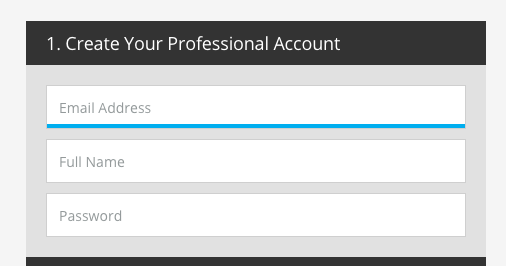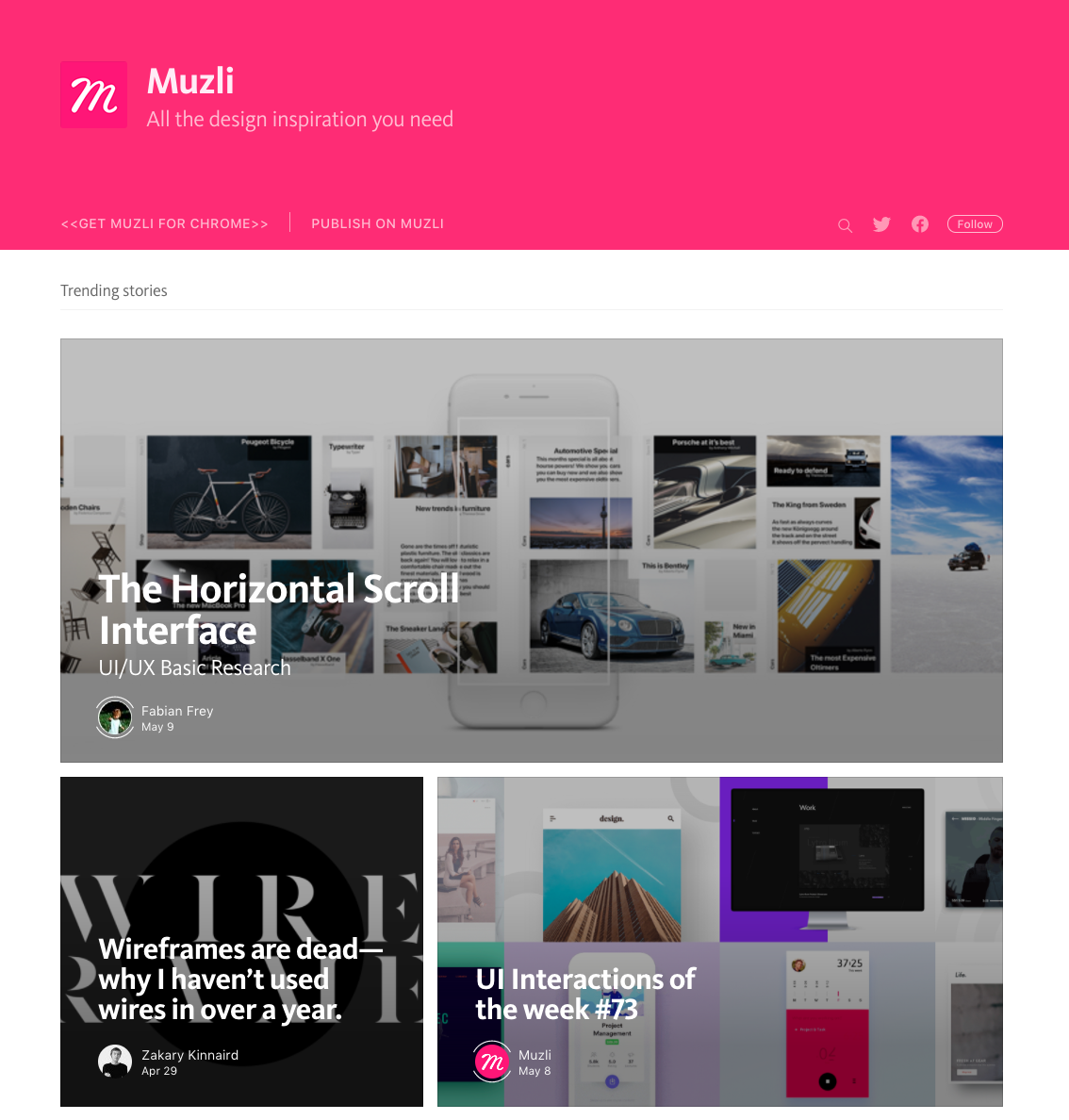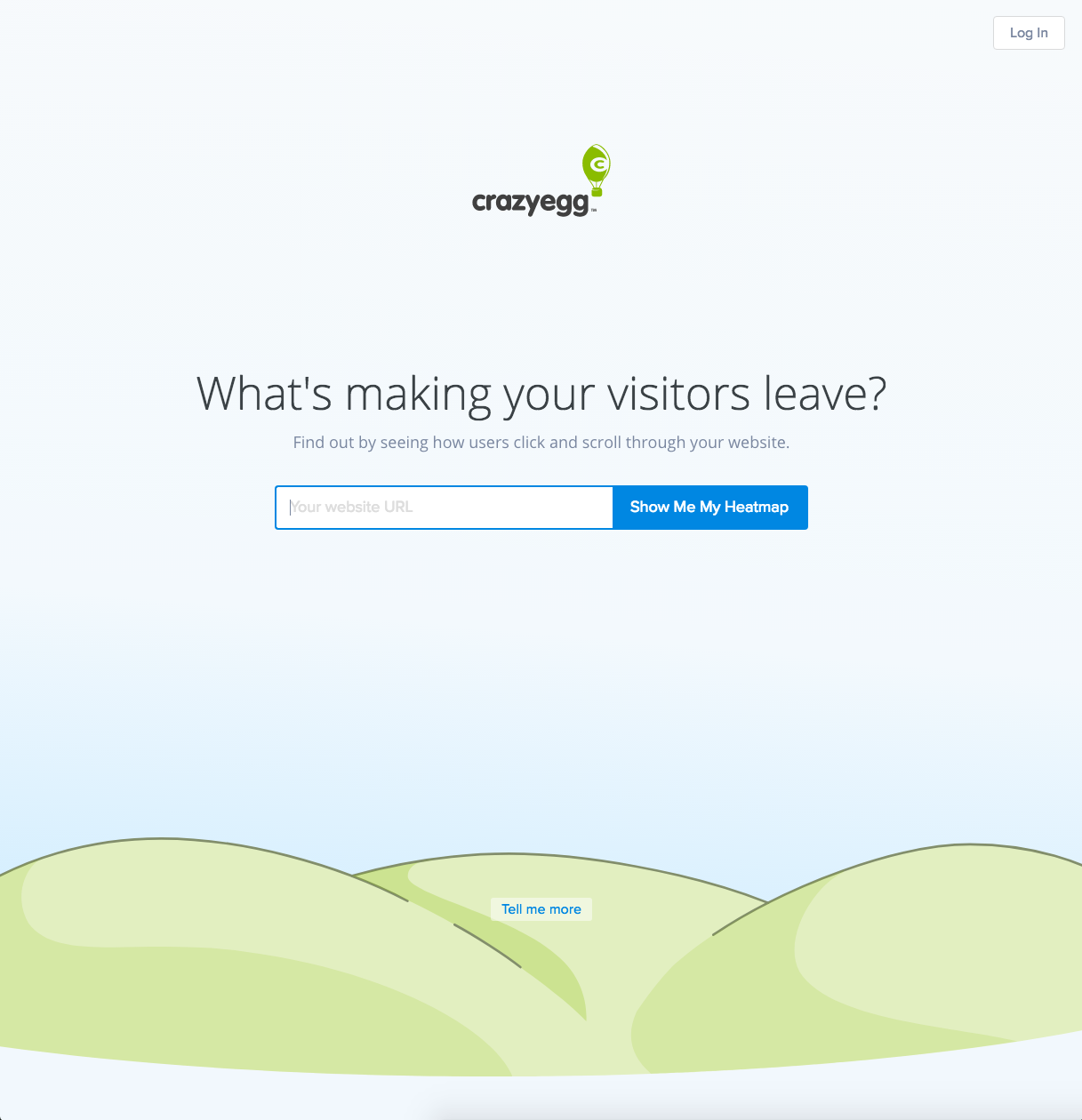Capturing online leads isn’t that hard. Any Tom, Dick, or Sally can do it. Capturing qualified leads is a different story. In fact, it can be a downright bummer, a complete bore, and something many businesses dread.
Why is it that qualified leads are so much harder to capture? Because qualified leads have specific behaviors and traits; they understand your products and services and know that your company falls in-line with their budgetary requirements. A qualified lead is someone that has been thoroughly researched and vetted by your marketing and sales team.
Salesfusion does a great job explaining the differences between qualified and unqualified leads in the image below.

Attracting Qualified Leads Online
We’ve established the fact that finding qualified leads online is difficult, but sometimes a well-placed statistic can create a better perspective.
Approximately 96% of website visitors aren’t ready to purchase.
That means if 100 people visit your website today, only 4 of them might be ready to buy something from you. “Might” being the key word. Even if they are ready to purchase, that doesn’t mean they’ll spend their money on your products or services. They could be shopping around for the best price or looking for a version of your product that comes in their favorite color. Basically, they still won’t have a compelling reason to spend their money with your company.
There’s a million different variables that can influence a visitor’s decision process once they land on your website. It’s your job to influence their decisions. You want to know if each visitor has the potential to become a qualified lead, or if it’s best to remove them from consideration.
Many businesses make the mistake of trying to turn unqualified leads into qualified leads. They’re convinced that if they just show people how great their products or services are they won’t be able to resist purchasing. Don’t waste your time. An unqualified lead is useless to you and your business. No amount of coaxing will convince them to suddenly become a qualified lead. Focus your attention on attracting qualified leads only.
To begin qualifying visitors as potential leads, you need to create a lead generation pipeline. The purpose of your pipeline will be to attract visitors online and guide the qualified ones into your sales funnel.
Components required for generating qualified online leads:
- A Call-To-Action – Let’s use HootSuite as an example. When you visit their homepage, the first thing that jumps out at you is a big, bold CTA with a bright green button.

- A Landing Page – Once you click the CTA you’re sent to the corresponding landing page which typically contains additional information and a contact submission form.

- A Submission Form – You need some way of capturing the visitor’s information so you can contact them later to thank them for a purchase, place them in an email nurturing campaign, or notify them of discounts, company news, and more.

- An Offer – Create an offer that your ideal customers want. In this case, HootSuite’s ideal customers are business owners, social media managers, and community managers who need a way of streamlining their social media execution process.

Now we get to the heart of the matter; capturing qualified leads online. There’s a million different ways to get qualified leads online, so it can be difficult to decide which ones are best for your company. Here’s 7 indispensable ones we like to use:
- Customize messaging for your ideal customer
- Thorough market research
- Harness the power of content
- Educate your audience
- Use the urgency principle
- Practice full transparency
- Perfect for your lead-capturing components
1. Customize Messaging for Your Ideal Customer
Have you ever received a promotional email or newsletter that fails to resonate with you? You know the kind we’re talking about. They start out greeting you by name, then proceed to act like they’re intimately familiar with your needs, but wind up completely missing the mark. Did you unsubscribe from their emails? You probably did and you should. The sender was intimately unfamiliar with you and your needs.
Making assumptions in your messaging is a bad idea. You need to focus on understanding who your ideal customer is, inside and out. Become as familiar with their wants as possible, then determine how your products or services fit in the picture.
One of the best ways to define your ideal customer is to use your brand attributes to determine which characteristics manifest themselves in your perfect audience. Check out Muzli’s homepage below. They use a beautiful balance of visuals with small snippets of copy. As soon as you navigate to their website a tagline makes it clear exactly who their ideal audience is; people looking for design inspiration.

2. Thorough Market Research
Successfully capturing qualified leads online requires an extensive amount of research. We know what you’re thinking; “YAY, I love research…I could do it 8 hours a day, 7 days a week!” You’re probably not that enthusiastic, but as you already know, almost every aspect of your business has some reliance on accurate research.
There are 2 areas you need to thoroughly research before you can begin implementing lead capturing tactics:
1. Keywords – You need to know which search terms your ideal customers are using so you can start targeting those keywords. If you’re selling red wool socks, you’d need to research as many related keyword terms as possible. Your list can be as long or as short as you want. Just make sure all your bases are covered. When an ideal customer is looking for a pair of red wool socks, you want them to visit your website, not a competitor’s. Here’s an example of some keyword phrases your ideal customer might search:
1. Red wool socks
2. Wool socks, red
3. Thick red wool socks
4. Red socks
5. Wool socks
6. Women’s red wool socks
7. Men’s red wool socks
8. Girl’s red wool socks
9. Boy’s red wool socks
10. Pair of red wool socks
2. Your Audience – All the basics, such as demographics and geography, should be your research foundation. The real work begins when you examine behavioral data. How does your audience like to communicate? How do they respond to different messaging? Do they like visuals, audio, or copy? What are their purchasing habits?
To make efficient use of your time, conduct quality research. It’s easy to flit around the web reading 30 different sources or glance at research from 9 years ago. Your best results will come from relevant data and sources that accurately reflect the characteristics of your ideal customer.
3. Harness the Power of Content
What is it that usually tempts you to visit a website? Is it a great blog post? A new podcast episode? A YouTube video? Perhaps it’s all three, and more. Regardless, they all have something in common; they’re all pieces of content. Even product descriptions are content.
Your audience is no different than everyone else on the internet. They access websites because a piece of content piques their interest and they want to know more. To capture them as an online lead you need to stir their curiosity. Give them content they can’t resist.
Content marketing conversion rates are almost 6X higher than traditional marketing.
It’s impossible to not get excited when you see that statistic. Creating exceptional content that resonates with your ideal customers will lead to a steady stream of qualified online leads for your brand.
Backlinko does a phenomenal job populating their homepage with meaningful content that appeals to their ideal customers. Their CTA is huge and gets right to the point. Right below the main CTA is a strip of graphic logos from highly respected online publications that adds authority to Backlinko’s content.

They even took it two steps further and added a social proof section, with raving quotes from two prominent influencers, Neil Patel and John Jantsch. As you continue down the page, they highlight impressive statistics and graphs from a successful case study, further cementing their status as an authority in the industry.

The key to creating great content is to make content your audience wants. Forget about what they need, give them what they want. Most of the time your ideal customers won’t know what they need, but they almost always know what they want.
Types of content that are effective for generating qualified leads online:
- Blog posts
- Whitepapers
- Webinars
- Ebooks
- Product demos
- Trials
- Templates
Always keep in mind that quality trumps quantity. It’s better to have one exceptional whitepaper your ideal customers can download, rather than 13 sloppy, hastily-made whitepapers. The more effort you put into creating high-quality content, the more valuable you can make it.
4. Educate Your Audience
Remember how we mentioned that your audience doesn’t always know what they need, but they always know what they want? You can use this to great advantage for your business by creating content and free offers that educate and inform. By doing this you can begin to align their wants with your products or services that fulfill their needs. Once you do that it’s much easier to market your products and services. It also helps to position your brand with greater authority.
For example:
If one of your website visitors wants to know how to match a pair of red wool socks with their outfit, you could create a blog post addressing some solutions. In the blog post you can begin to educate them as to the superior quality and function of your red wool socks, without directly selling to them. Discuss scenarios, conditions, outfits, and activities where your socks would be an asset. Keep it subtle and always focus on delivering valuable content over sales content.
Social Media Examiner is a perfect example of a brand that uses a combination of blog posts, whitepapers, ebooks, podcasts and more to educate their audience on topics they’re interested in.
Check out three pieces of their content below. The first is a blog post that educates the readers on how to acquire leads through LinkedIn. The second is a landing page promoting their Social Media Marketing Talk podcast. The third is a PDF of their 2016 Social Media Marketing Industry Report. What they all have in common is the purpose of informing the audience while delivering the content they want.

5. Use the Urgency Principle
There’s no excitement in having something that everyone else has. It’s not unique and it doesn’t feel special. You don’t come home from work every day and start doing your happy dance when you see your kitchen sink. Or maybe you do, we’re not here to judge. The point is, there’s no appeal in getting something that’s readily available or is available for eternity.
It’s a completely different story when you want something and find out you might not be able to get it. People like to overcome challenges, even if they’re only perceived challenges. It makes success that much sweeter when they feel they’ve accomplished something difficult.
Enter the urgency principle. Have you ever visited a landing page with a timer at the top? It typically says something along the lines of, “Only 25 minutes left to complete your order!” It’s not always a timer, sometimes it’s a counter that tells you there’s only 3 of the desired item left, or a discount that expires in 24 hours. Regardless of what form it comes in, urgency works.
Urgency is an amazing tool for generating qualified leads online. You just need to create a sense of scarcity. A prospect might not purchase your product during their first visit to your website because they know it will be there next week. In other words, they don’t need it now if they can get it later. The scenario changes completely if they find out the offer won’t be available past a certain, upcoming date.
Email subject lines that create a sense of urgency can boost open rates by 22%.
We’re sure you’ve heard of the Cronut, that magical mashup of a croissant and doughnut invented by Chef Dominique Ansel. His creations are so popular now that his website describes three different methods customers can use to acquire the delicious treats.

Why are Ansel’s cronuts so popular? While we’re sure they’re delicious, it’s not the flavor that’s making these pastries fly out the door. It’s scarcity. If you don’t get in line by 7:30 a.m. you probably won’t get one, and once they’re sold out they won’t make another batch until the following day. The limited supply creates a sense of urgency, making Ansel’s cronuts highly desirable.
6. Practice Full Transparency
To get highly-qualified leads, you need to use honest, sincere language that tells visitors exactly who your brand is and how your products or services can help them. Transparency will serve your company well. People like to interact with authentic brands.
Steps to becoming more transparent:
- Don’t hide prices
- Make your contact information EASY to find
- Set clear expectations for how your company operates
- Only talk about things that are within your wheelhouse of expertise
- Give credit to outside sources
The key to achieving transparency is getting your audience to trust you. Patagonia took transparency to a whole new level in the textile and clothing industry with “The Footprint Chronicles”. Using an interactive map of the world, Patagonia drops pins on the map that mark every location in the world where their textiles are created, including textile mills, factories, and farms.

To create even more transparency, they publish blog posts, articles, and videos that discuss fair trade, textile sourcing, and other thoughtful topics.

You can’t get much more transparent than that.
7. Perfect Your Lead-Capturing Components
Capturing online leads is almost impossible without perfecting the execution of lead-capturing components.
The most essential lead-capturing components:
- CTAs
- Landing pages
- Emails
- Offers
- Forms
CTAs serve as your final instructions to visitors. They should motivate visitors to take a desired action, such as submitting their contact information in exchange for a whitepaper. You need to accomplish three things in your CTAs:
- Give people confidence to purchase or take action by erasing doubts and mitigating their perceived risks.
- Tell visitors what they need to do next so there’s as little room for error as possible.
- Create a sense of urgency so visitors are motivated to take an immediate desired action.
Crazyegg uses their homepage CTA to accomplish all three of the above tactics. The first line creates an immediate sense of urgency by implying that your website is losing visitors and potential revenue. The second line offers a solution to the problem which builds confidence, and the button tells visitors what to do next.

Landing Pages should include a specific group of elements that (again) prompt a desired action from visitors. They also create an opportunity to briefly highlight the benefits of your offer and provide a way to use compelling copy and visual elements. Here’s a few things you’ll need to include on your landing page if you want to turn visitors into leads:
- A value proposition
- A visual(s)
- Benefits of the offer
- A CTA
- A form
It’s not a bad idea to use some social proof as well by including reviews or testimonials from customers with positive experiences. Wistia created a simple, but effective landing page where interested visitors can sign up for free accounts.

Emails are the most diverse of all the components used to generate qualified leads online. Length, content, and messaging possibilities are endless. The most important thing to remember is that you want your recipients to take a desired action. Your copy needs to be compelling and you need to use at least one CTA
Check out this Father’s Day email sent by Uncommon Goods. It’s simple, visual, and light on copy, but it’s still clear what they want recipients to do; click on a category of products to shop for Father’s Day gifts.

Offers are where you’ll either turn a visitor into a qualified online lead or turn them away. This should be created first so that the messaging for each component is based on the core benefits of your offer. Whether you’re creating a whitepaper, ebook, or template, these principles should govern the creation of your offers:
- Make it valuable
- Use a format that’s easy to scan
- Include relevant visuals
- Make sure it’s 100% error-free
In our recent blog offer, The Epic Guide to Social Media Strategy, we created a resource which lays out a step-by-step plan to building an effective social media strategy. The content is easy to skim, visual elements highlight the most important information, and most importantly, it delivers value to the reader.
Forms are the simplest of all the components, but no less important. The form is what each visitor will use to submit their contact information in exchange for your offer. The only thing you need to do is decide which fields to include in the form. Complex offers may justify receiving a greater amount of information from visitors, including job titles, company name, and industry. Simple offers should require minimal contact information. Regardless of the circumstances, you should always require these three fields:
1. First name
2. Last name
3. Email address
With this information you’ll be able to nurture a relationship with new leads using targeted email campaigns.
Start Generating
Turning your visitors into qualified leads online takes time. It’s important to focus on accuracy so that you’re only capturing leads who are truly interested in your offers and have the potential to become customers.
Don’t worry about running into problems or making mistakes. Each one is a learning opportunity that can be used to improve your lead generation process. We’ll leave you with this quote from legendary race car driver, Mario Andretti:
“If everything seems under control, you’re just not going fast enough.”
-FINAL(01-00)-White&Blue-01.svg)






